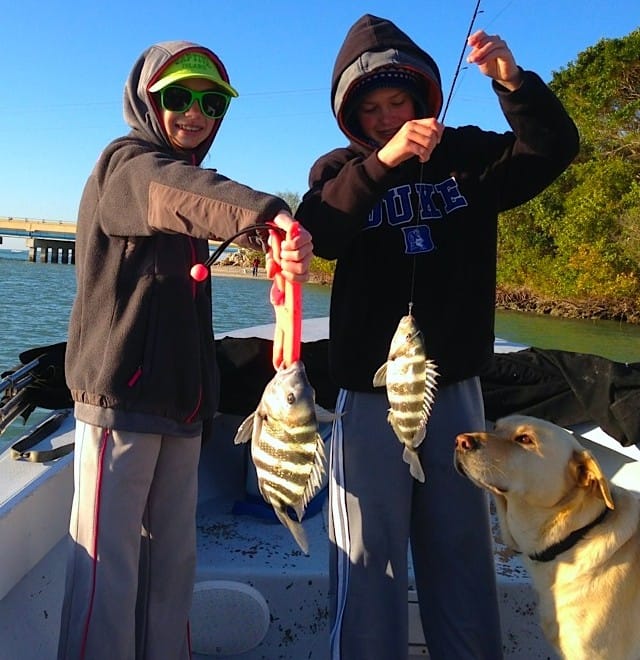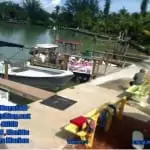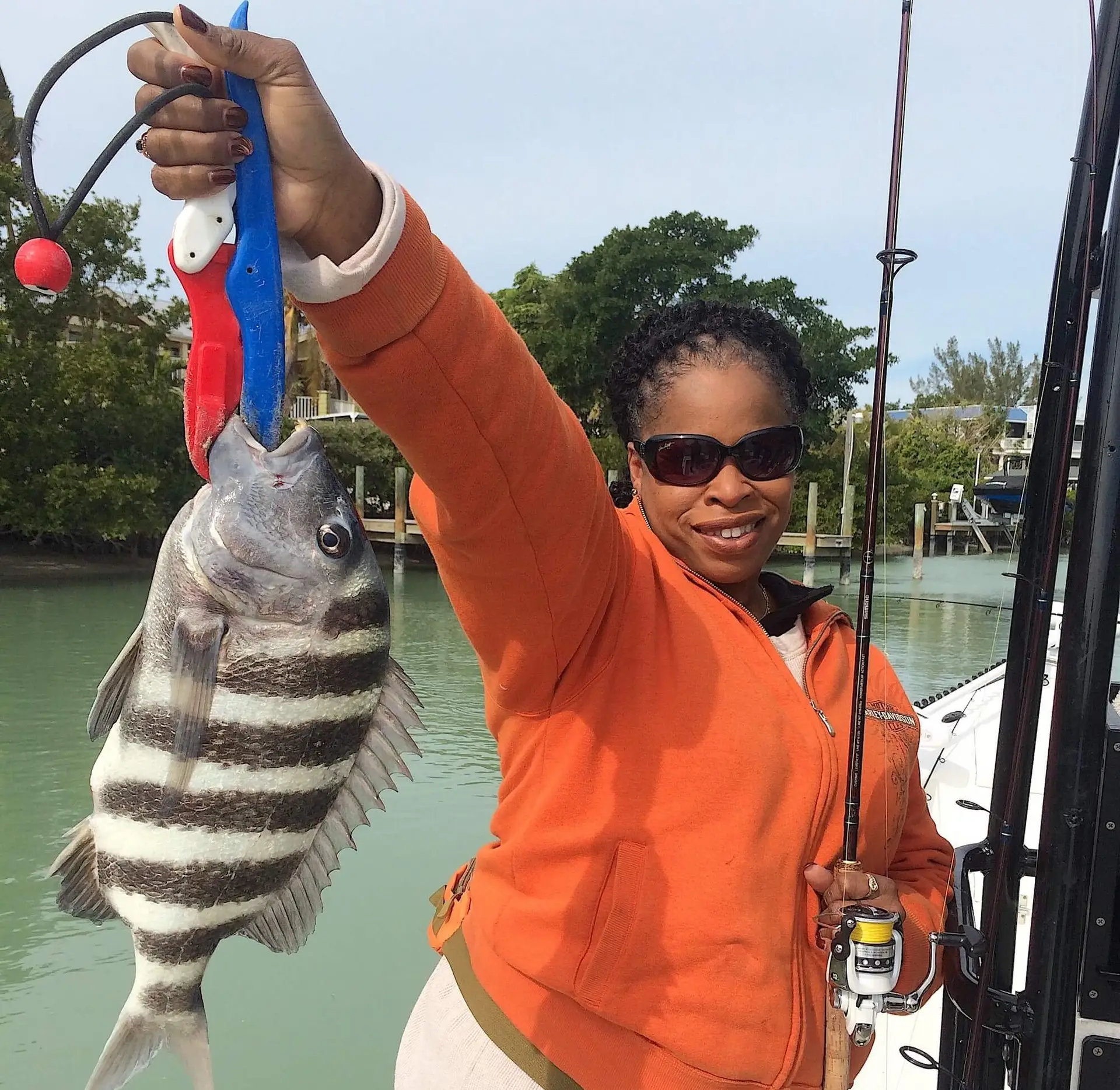
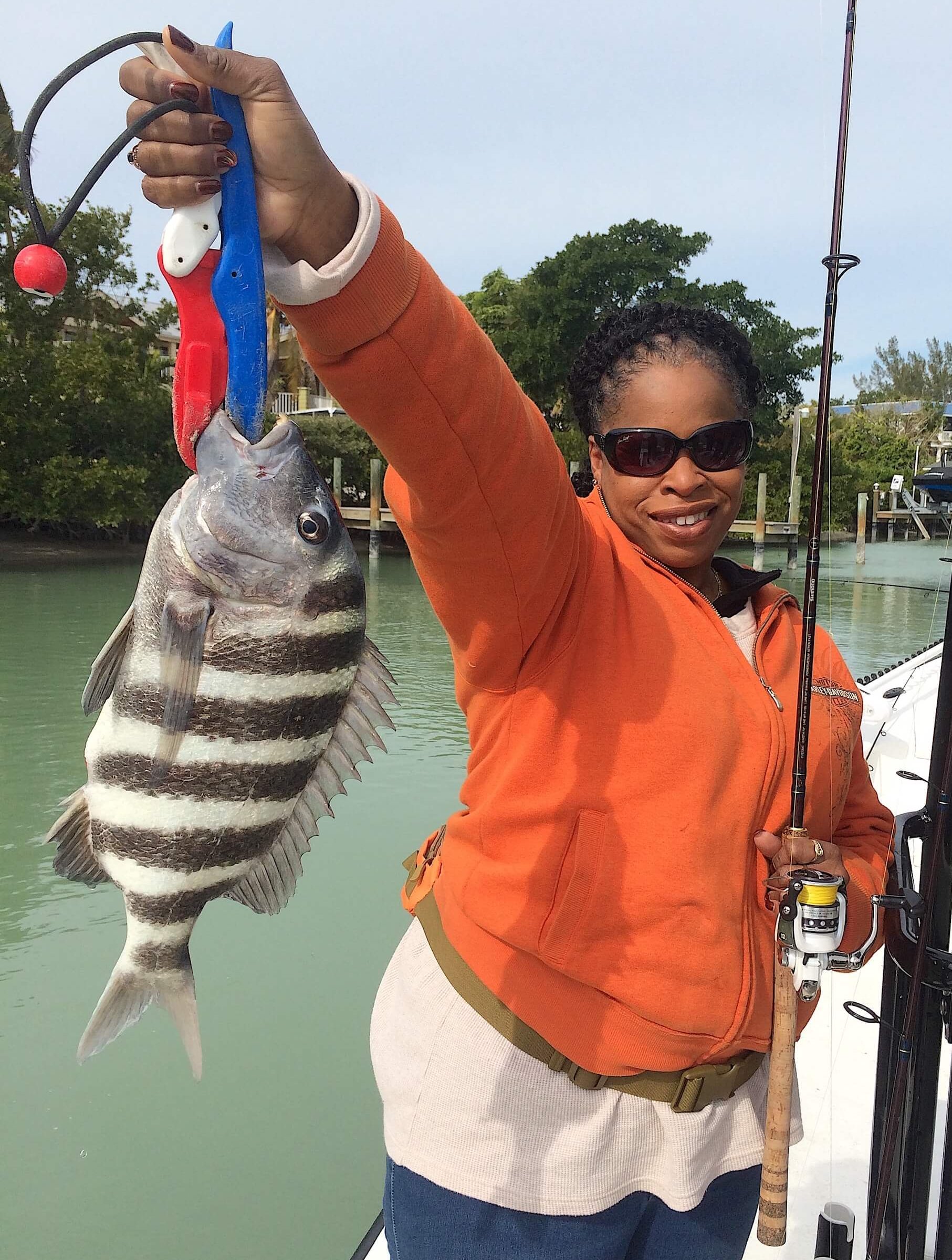
Sanibel Fishing & Captiva Fishing, January 18, 2018: Sheepshead.
Captiva Fishing Report, Thursday, January 18: Very Cold Again, Sheepshead, Catch & Release; Red Tide Report (Caloosahatchee freshwater runoff impact continuing to lessen a bit; some Red Tide but it is broken up and largely dispersed); more fishing reports from other areas and Captains below.
Thursday, January 18: Really Cold, Sheepshead, Structure, In The Passes, Catch & Release. Worried about the snook again. Please also visit the Sanibel, Fort Myers, Florida Fishing Report and Cuban Fishing sites. Better water moving north of Sanibel up through Captiva & North Captiva.
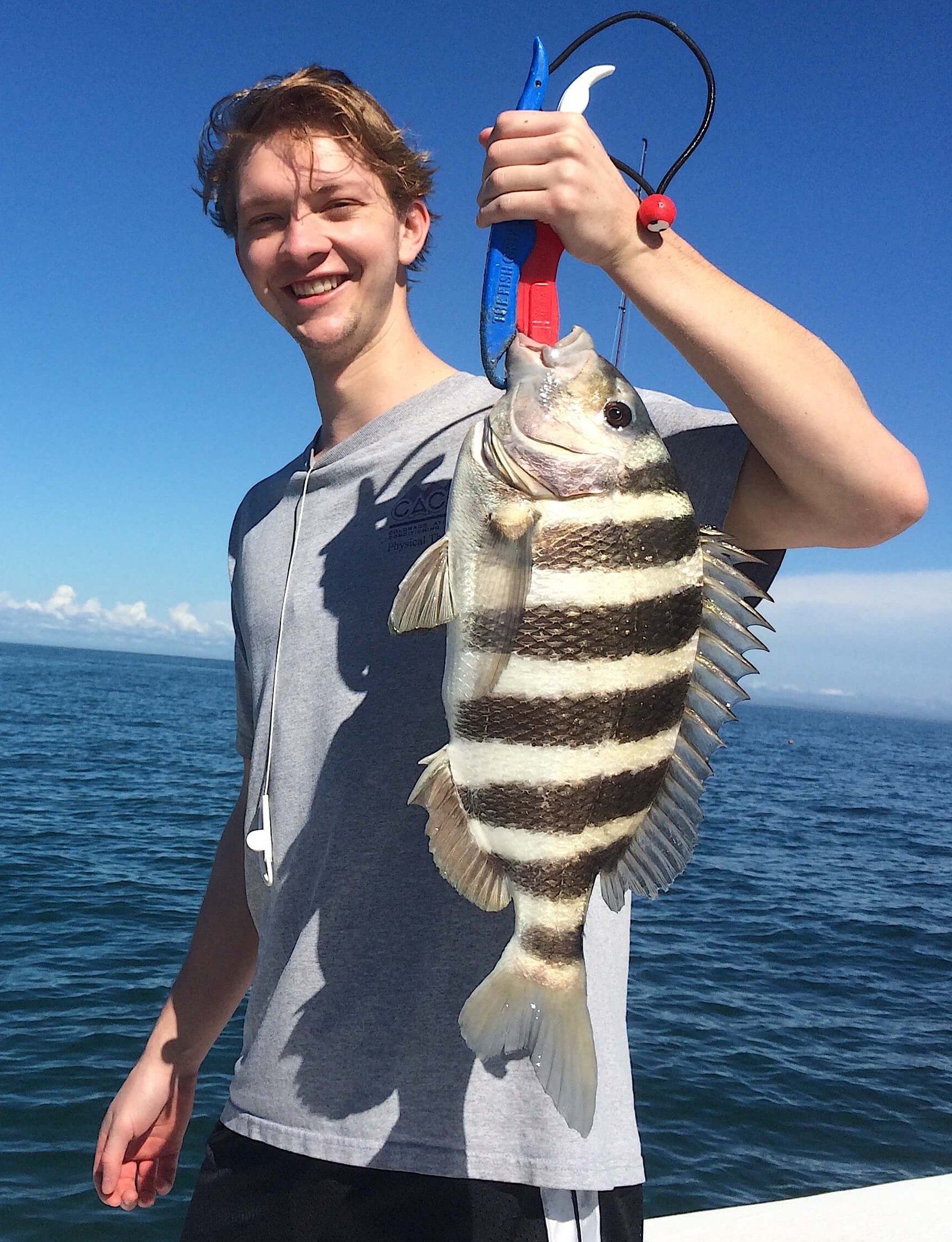
Please also visit the Sanibel, Fort Myers, Florida Fishing Report and Cuban Fishing sites. Better water moving north of Sanibel up through Captiva & North Captiva.
Please click here to Book A Charter or call 239-472-8658 and here for Live Sanibel Traffic Cams.
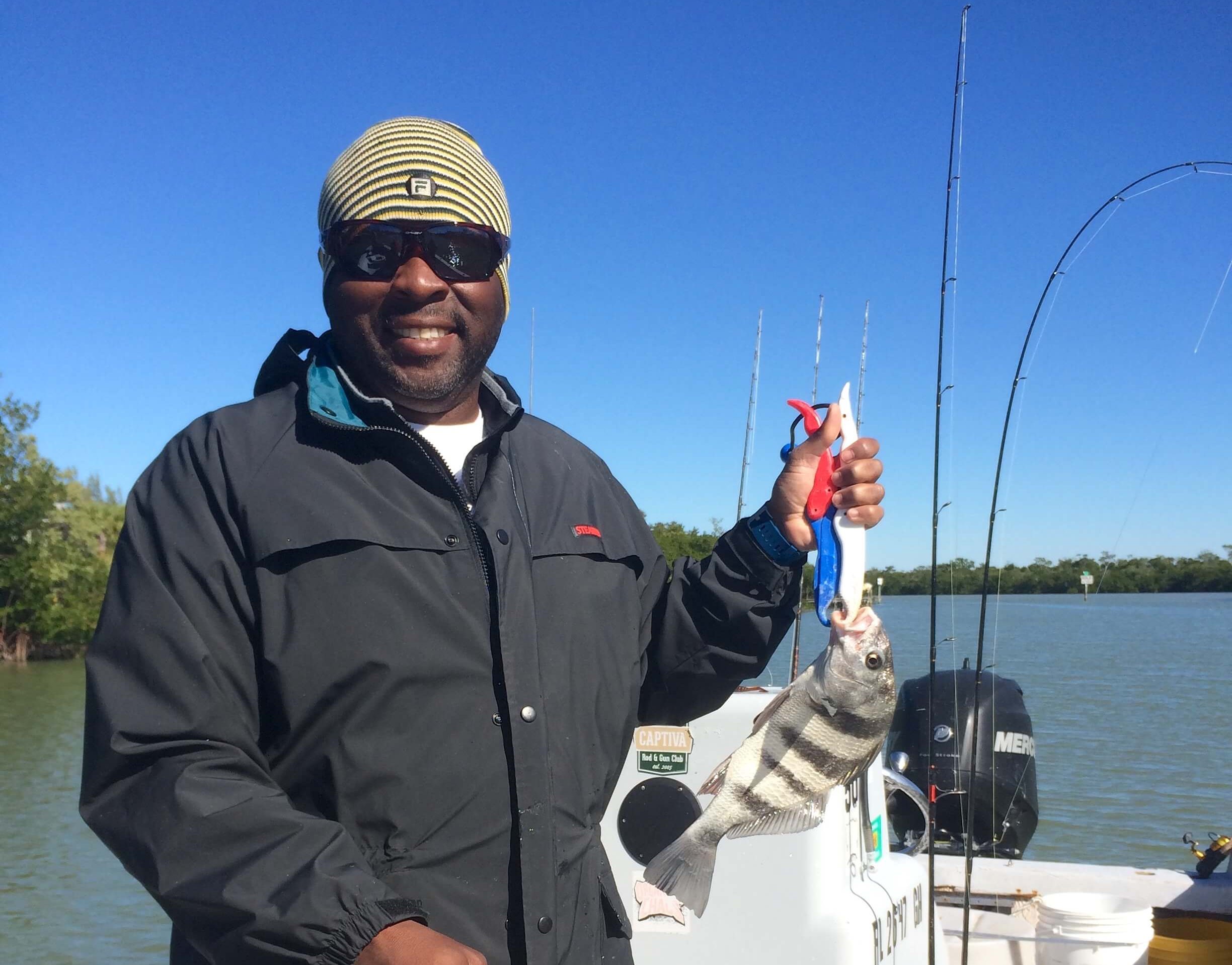
Archosargus probatocephalus, the sheepshead, is a marine fish that grows to 76 cm (30 in), but commonly reaches 30 to 50 cm (10 to 20 in). It is deep and compressed in body shape, with five or six dark bars on the side of the body over a gray background. It has sharp dorsal spines. Its diet consists of oysters, clams, and other bivalves, and barnacles, fiddler crabs, and other crustaceans.[1] It has a hard mouth, with several rows of stubby teeth – the frontal ones roughly resembling human teeth – which help crush the shells of prey.[2]
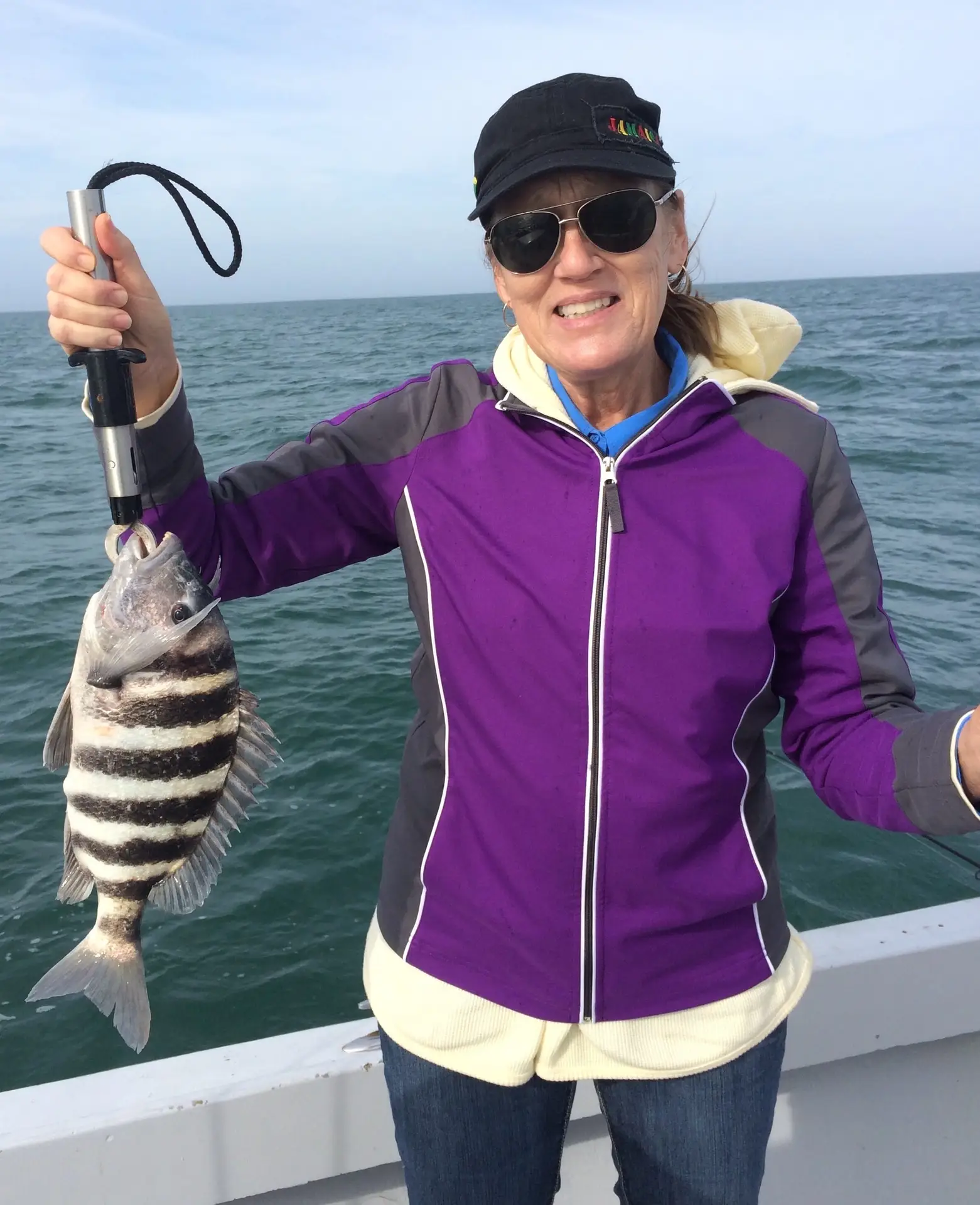
The sheepshead is found in coastal waters along the western Atlantic, from Nova Scotia to Brazil, but the greatest concentration is around southwest Florida.[3] Although the Sheepshead Bay section of Brooklyn, in New York City, was named after the fish,[4] it is now rarely found that far north.
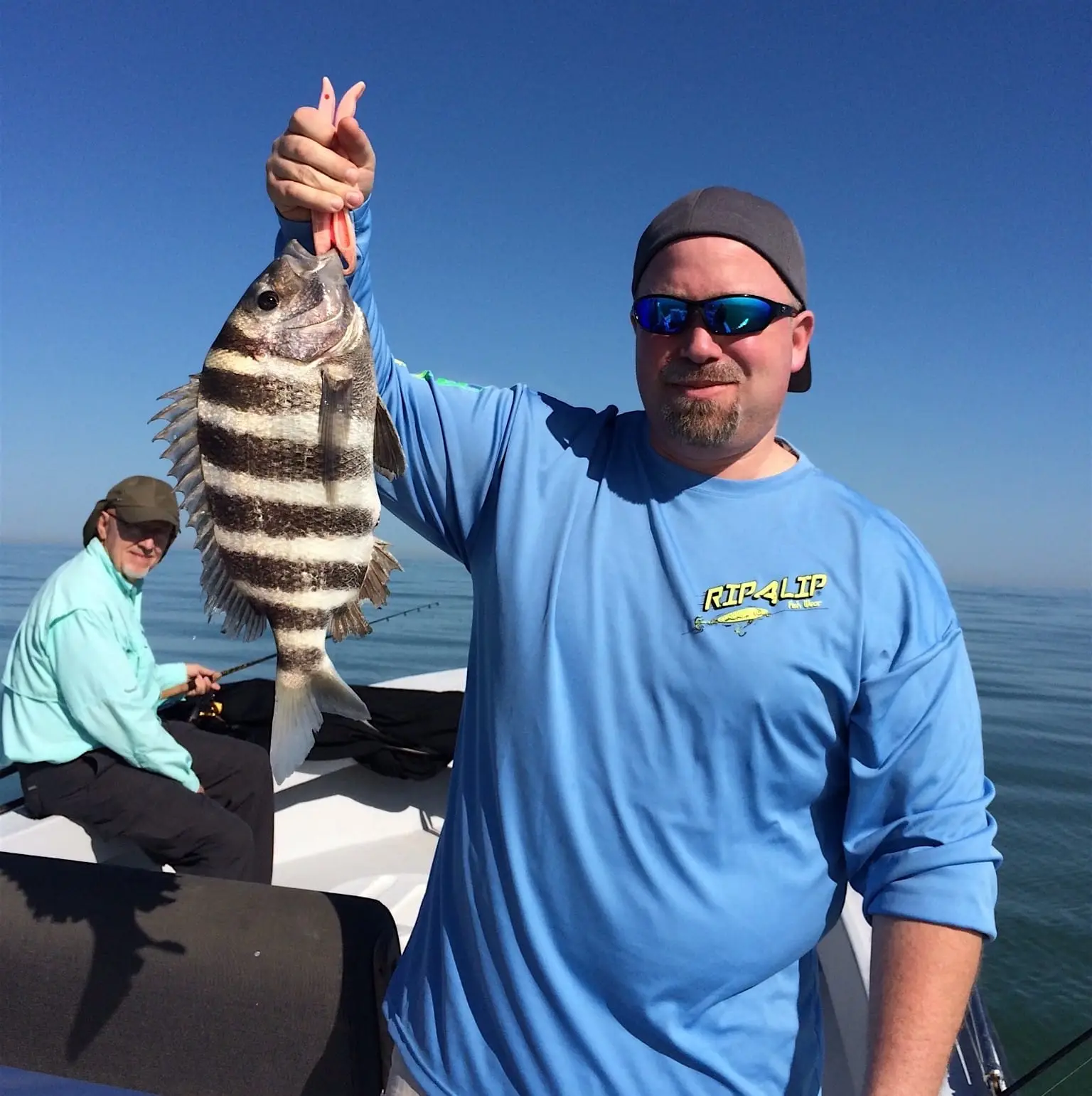
As sheepshead feed on bivalves and crustaceans,[1] successful baits include shrimp, sand fleas (mole crabs), clams, fiddler crabs, and mussels.[5] Sheepshead have a knack for stealing bait, so a small hook is necessary.[5]Locating sheepshead with a boat is not difficult: Fishermen look for rocky bottoms or places with obstructions, jetties, and the pilings of bridges and piers.[5] The average weight of a sheepshead is 1.4 to 1.8 kg (3 to 4 lb), but some individuals reach the range of 4.5 to 6.8 kg (10 to 15 lb).[5] Please see more information here.
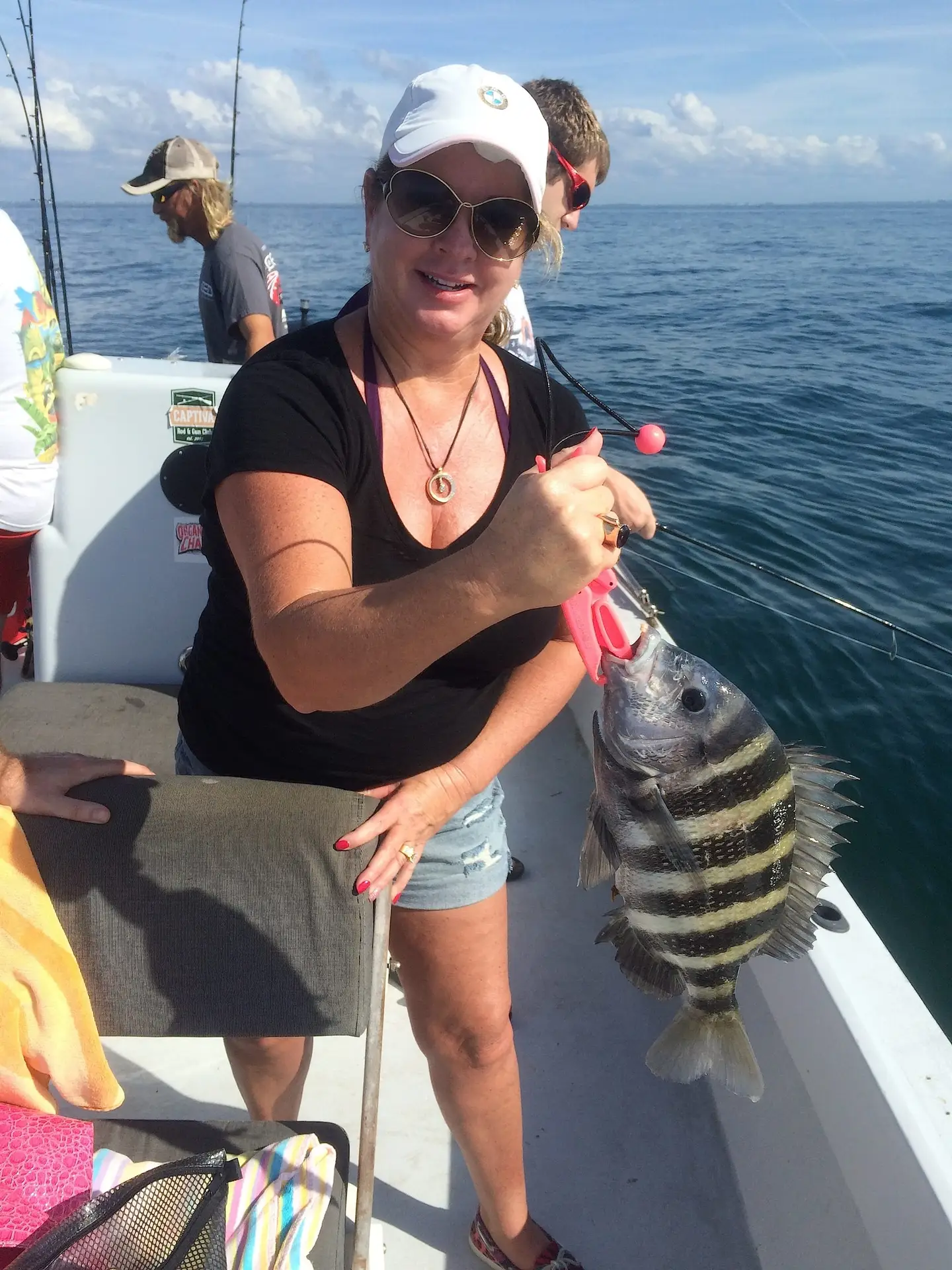
“Florida Regulations:
| Regulations | Gulf State Waters | Atlantic State Waters |
|---|---|---|
| Size Limit | 12” | |
| Daily Bag Limit | 15 per person | |
Gear Requirements:
- Legal Gear: hook and line, cast net, seine, spear or gig
- Illegal Gear: Harvest prohibited by or with the use of any multiple hook in conjunction with live or dead natural bait; Snatching prohibited
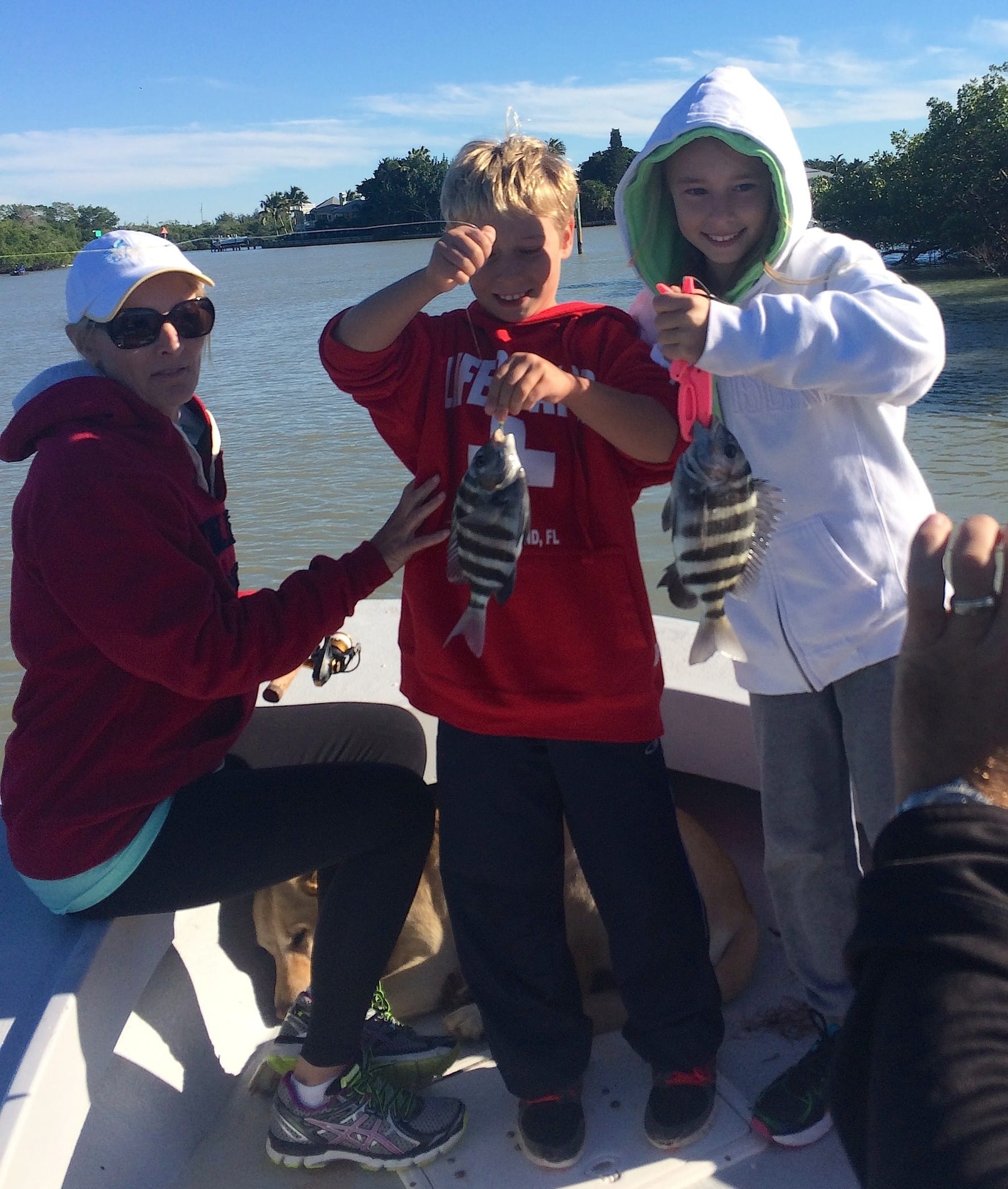
Sheepshead, 11-28-14, Sanibel Fishing & Captiva Fishing & Fort Myers Fishing Charters & Guide Service.
Habitat and Fishing Tips: Sheepshead are commonly found in brackish water river mouths, bays, estuaries, and tidal creeks and especially near oyster bars, buoys, channel markers, piers and bridge piles where food is plentiful. Sheepshead feed primarily on crustaceans, mollusks, barnacles and small fish.
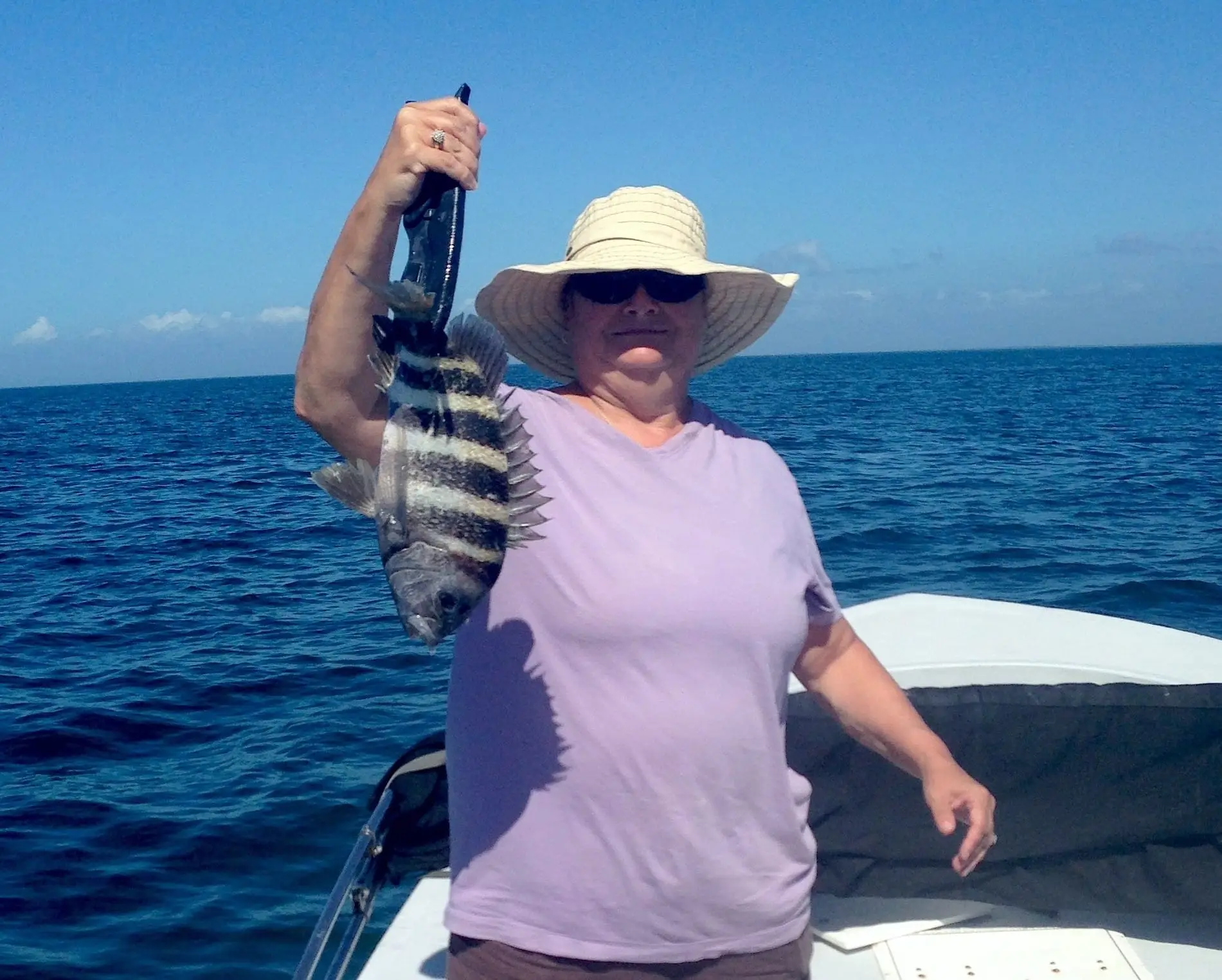
Anglers typically use light to medium weight spinning tackle with shrimp, sand fleas or small crabs as bait. Using their specially adapted (human-like) incisors and crushing molars, sheepshead can be difficult to hook and have an uncanny ability to clean a hook without you knowing anything happened.
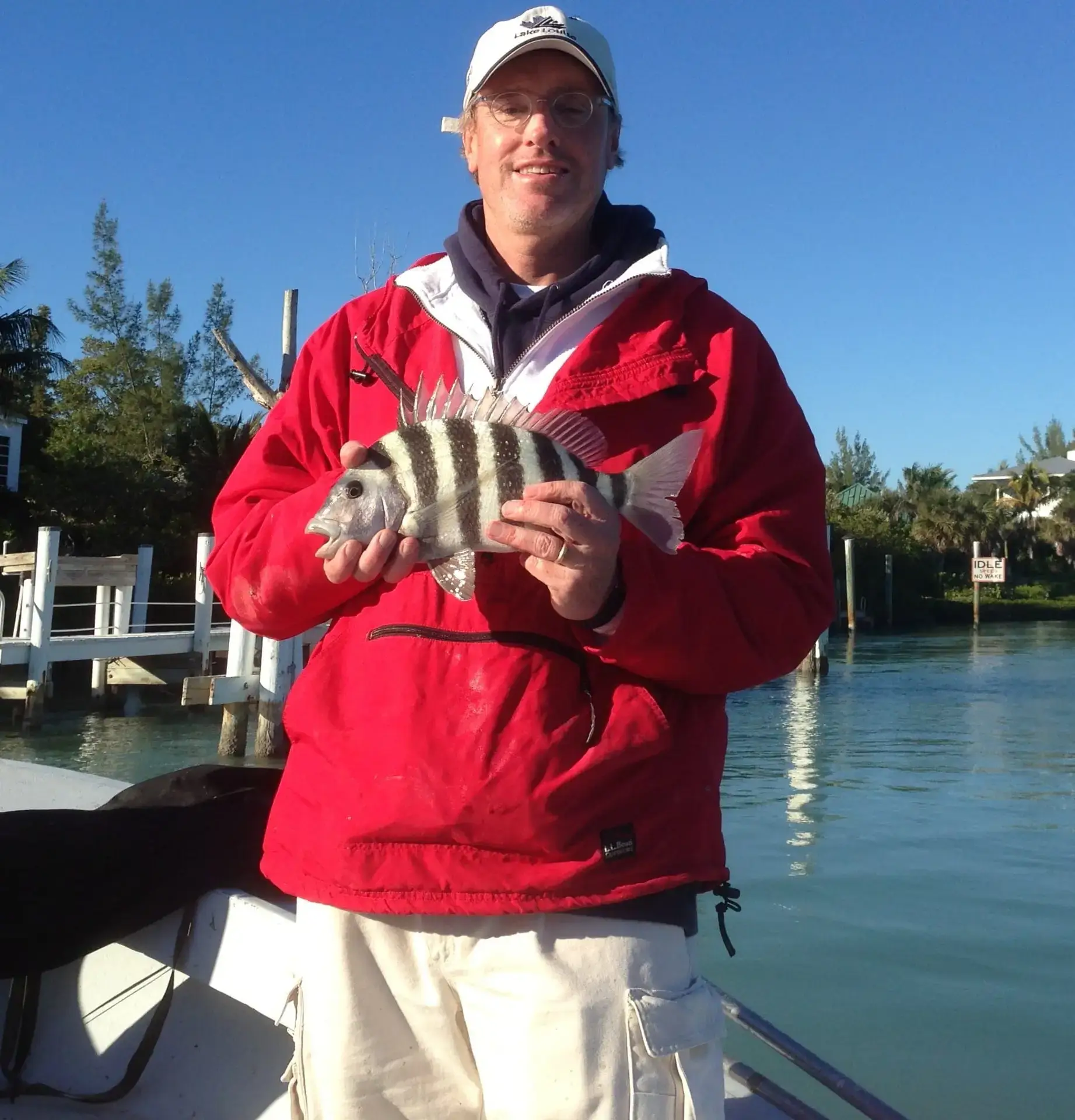
When targeting sheepshead, it is very important to keep your line tight and be ready for the bite because you often get one, and only one, chance to set the hook. The food quality of sheepshead is very good, and they are one of the only fish that can smile back at you during the picture!
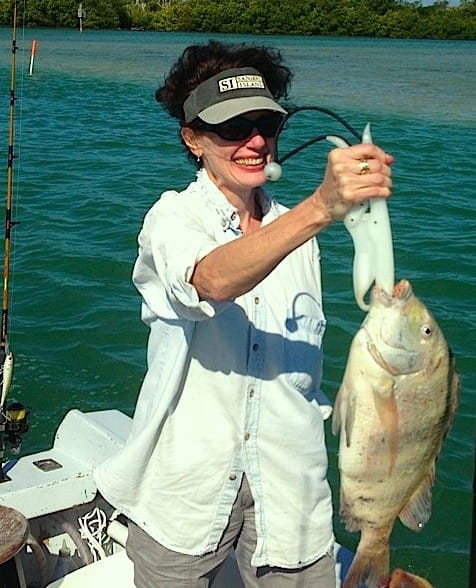
Can oysters and barnacles be used as bait or chum for sheepshead Oysters and barnacles are very, very different when it comes to regulations.
Oysters have closed seasons, bag limits, size limits and can only be legally harvested in specific shellfish harvesting areas that are classified as “approved” or “conditionally approved” and in the “open” status. The Florida Department of Agriculture and Consumer Services Division of Aquaculture ![]() manages these shellfish harvesting areas.
manages these shellfish harvesting areas.
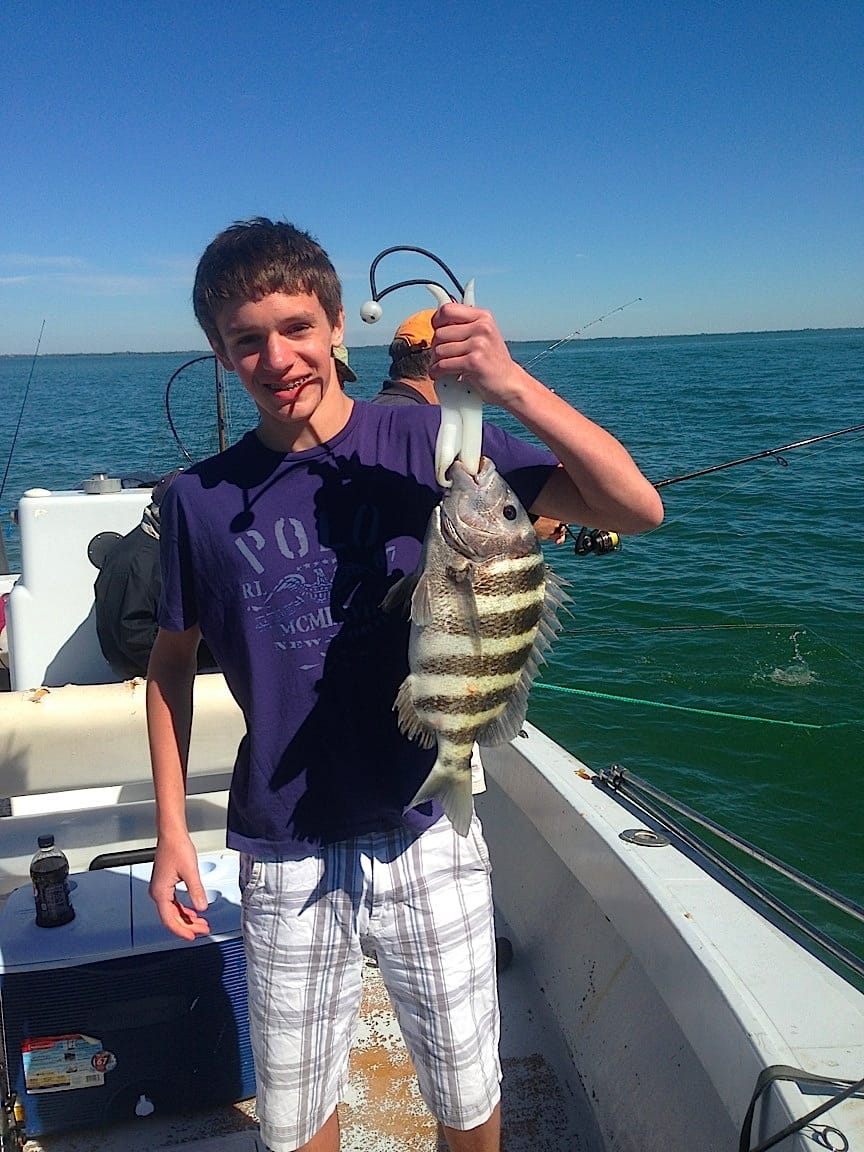
Barnacles, on the other hand, do not have size limits or specified bag limits, which means that you can harvest up to 100 pounds per person per day with a recreational saltwater fishing license and you can use them to chum sheepshead. You can also simply scrape them off bridge piles and allow them to sink and attract sheepshead. Do not scrape barnacles from private docks or other private structures without permission of the property owner.
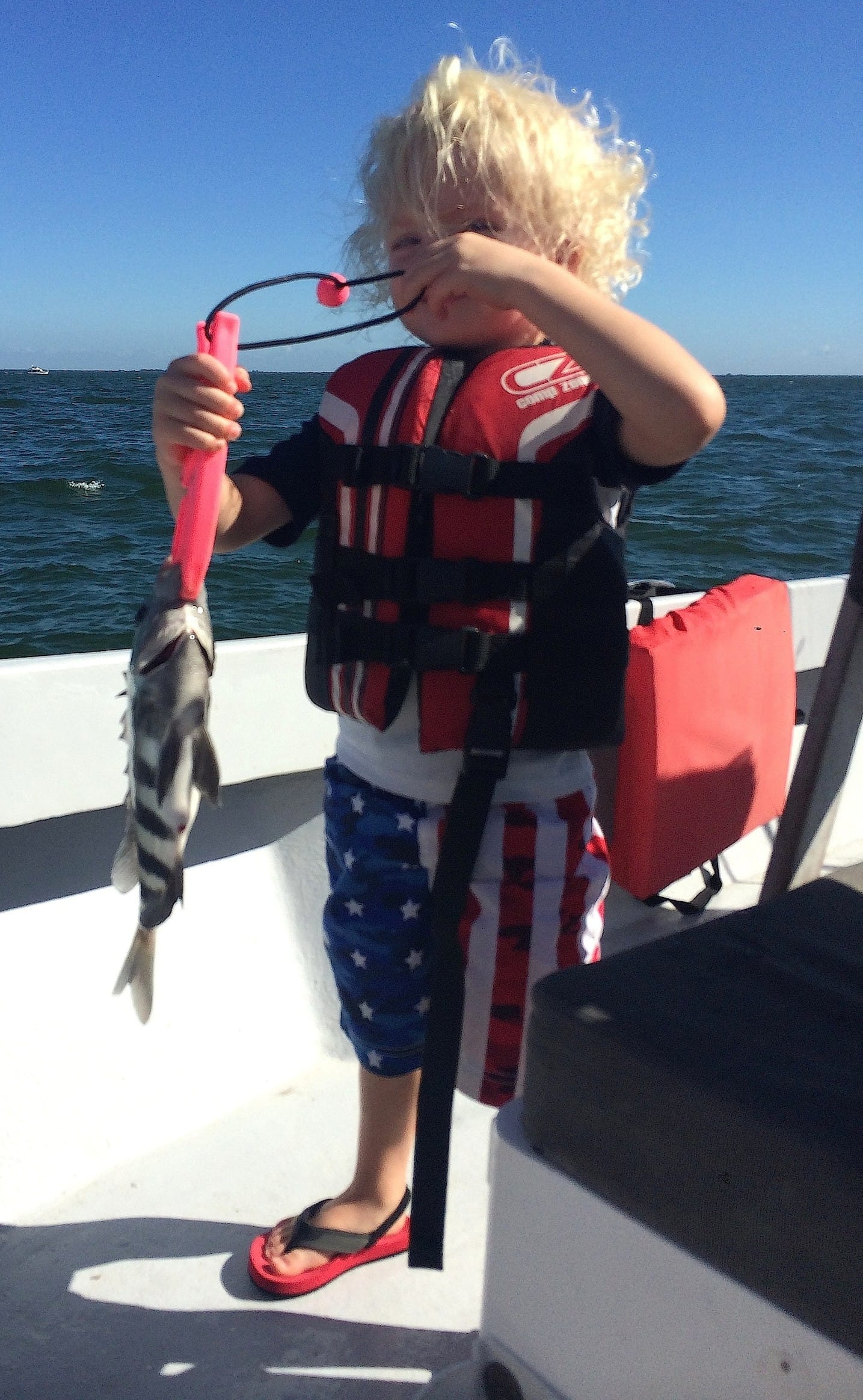
State Record: 15 lb 2 oz, caught near Homosassa.” Please see more information here.
Please click here to Book A Charter or call 239-472-8658 and here for Live Sanibel Traffic Cams. Sheepshead Fishing … click here for College Of Fishing Hats & Apparel.
We’re located in Castaways Marina, Santiva, Sanibel Island, just before the Blind Pass bridge to Captiva Island.

After a fierce storm, Turner Beach, the beach adjoining the Pass, is frequently covered with a bounty of shells from Olives to Fighting Whelks to the more common Conchs. The fishing is also renowned for sharks in the summer, tailing redfish on the bayside flats and snook under and off the Blind Pass bridge. Because Turner Beach faces Westward, the sunsets are spectacular and a popular viewing point for residents and visitors alike.
And you can like us on Facebook.
Fair winds and following seas,
Captain Joey Burnsed ~ please click calendar at the upper left or call 239-472-8658 to book a Sanibel & Captiva Islands, Boca Grande or Fort Myers fishing guide trip or shelling charter.
